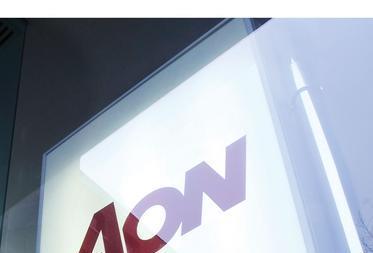With its new charging structure and GRIP technology platform, Aon is seen by many as the bully boy of the market – but isn’t it simply a case of a broker flexing its muscles to get a bit more out of a tough climate?
Aon has set the London market ablaze. The UK’s biggest broker is flexing its muscles, with plans to overhaul its charges to carriers, as well as its expansion into new revenue streams. In the face of new charges, some insurers have been quick to dive for the floor and cry foul, while Aon stands back and insists it is playing fair.
There are two distinct issues here, though they are sometimes confused. The first is Aon’s overhaul of the way it charges insurers for functions it carries out on their behalf, such as claims handling or drafting policies. Second is the introduction of GRIP, a technology platform offering a wide range of information that insurers have the option to buy.
Some insurers have been furiously briefing that Aon is using – and abusing – its powerful position in the marketplace to bully them into paying higher service charges and buying GRIP. Conversely, Aon claims that it is simply bringing transparency to its fee structure and offering a valuable new service in GRIP – which insurers can choose to buy or not. As the war of words rages on, who is in the right, and are there greater issues at stake?
Behind the changes
It’s important to understand what Aon is doing. The broker currently charges its insurer partners for a range of administrative functions. An insurer could be paying several different charges for different functions, at different rates across the market. Aon says it is simply reviewing these charges, with the aim of bringing in one service charge in the interests of simplicity, and ensuring greater transparency for end clients.
Last month, a spokesman told Insurance Times: “We are replacing an old structure with a new structure, not creating new charges. Our aim is to standardise and simplify the compensation process, not increase compensation; our goal is to create a simpler process for existing charges.”
Insurers beg to differ. A number of them are convinced that Aon is trying to hike its fees by the back door and are resisting the changes. The insurers concerned are fearful of speaking openly, given Aon’s might in the market. But their mutterings are becoming audible. In response, Aon has delayed the introduction of new charges in the London market – it is lengthening the negotiating period in the hope of coming to an amicable arrangement.
The spectre of contingent commissions looms over this row. Until 2004, insurers would make payments to brokers such as Aon depending on the volume of business they placed with them. Critics argued that this would tempt brokers to place business according to their own financial interests, rather than their clients’ best interests, and after high-profile legal wrangling, the payments were banned.
They have recently been reinstated, but their use is still restricted. Is Aon’s new charge simply a new form of contingent commission? Absolutely not, the broker says, as the payments are based on the volume of business placed.
Getting a GRIP
The second issue is GRIP. The broker is immensely proud of the new platform, which takes transactional data from across the company, compiles it according to the clients’ needs, and then offers a detailed picture of whatever sector or risk the client requires. For example, an insurer could see the volume of risks being placed in a particular line of business; the premiums; the reason clients choose whether or not to accept quotes; and so on.
Here’s what Aon’s spokesman has to say: “Carriers are able to gain valuable insights from GRIP through Aon’s GRIP Solutions unit. These insights are provided by way of a specific service contract, helping carriers strengthen their value proposition to clients via cutting edge analytics, business planning and co-ordinated communications.”
The broker’s bosses are close to Messianic in their zeal for the proposition, but privately, some insurers are sceptical. One said: “It blanks out the name of the other insurance companies and it tells you what the price of a train company is for property, or the limit they are buying, or you can see the spread of companies … that sort of information. But where’s the value in it? We can do all this with our own teams.”
The issue is live at the moment because Aon is trying to develop take-up of the platform. It has more than 10 users in the London market – and is currently trying to renew a couple of contracts. As to the argument that insurers can simply choose not to pay for GRIP if they don’t see any value in it, some say that’s not the case. They hint that the mighty broker would place less business with them if they refused – an accusation Aon stringently denies.
Revenue streams
Interesting though it may be, this is just one of the many rows – or negotiations, if you will – that keep the wheels of the London market turning. But there is a wider significance here. Aon is not the only broker seeking revenue streams from insurers. Other global players are developing their own models and no doubt the regionals will be close behind.
Organic growth is not an option for brokers in the current economy – the only way they can make more money is to charge more and, in the insurance value chain, insurers have the deepest pockets.
The head of one well-known Lloyd’s insurer puts it thus: “The tragedy is that the insurance broking profession hasn’t got the self-confidence to charge properly for the very good job it does. It’s a difficult job, and they can’t charge properly for it, so they try and screw it out of the underwriters. They cajole and use their market forces to get paid because they are so bad at charging the client the right rate. An investment bank will charge $5m without blinking for a bit of advice, whereas an insurance broker thinks $100,000 is a very big fee.”
Whoever you believe in the debate between Aon and its unnamed underwriters, one thing is clear. Brokers’ remuneration models are changing – and someone will have to pay. IT





































No comments yet